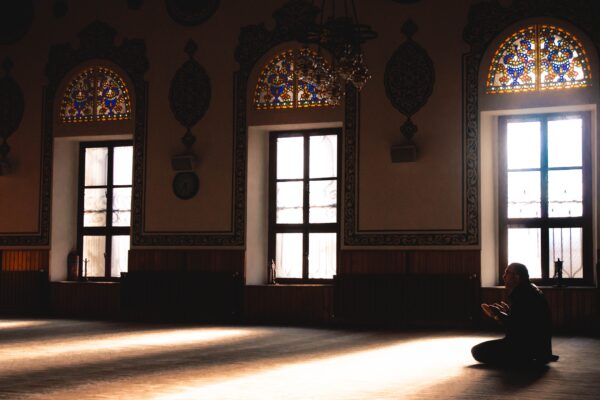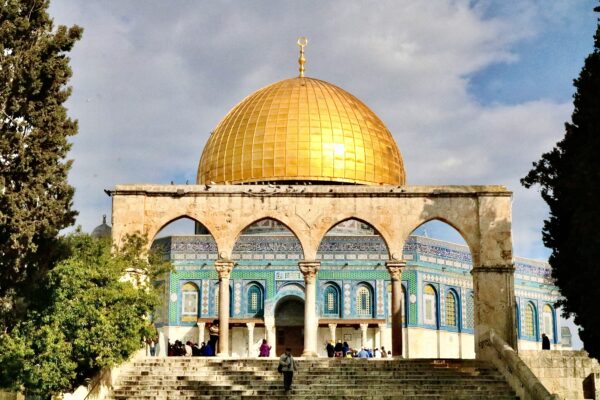At a time of media stereotypes, misinformation, and as more and more people are having questions about Islam, this book comes as a breath of fresh air and beautifully introduces what may be alien territory to many.
At a time of media stereotypes, misinformation, and as more and more people are having questions about Islam, this book comes as a breath of fresh air and beautifully introduces what may be alien territory to many.
About the Book
An academic best-seller, this book is an insightful, well-organised, and well-documented introduction to the holiest and primary source of knowledge for Muslims across the globe – the Qur’an – and the place it occupies in the life of a believer. It is rich in scholarly, historical, cultural and personal details, while providing semantic analysis of Arabic terms as well as English translations of passages from the Holy Scripture. In the words of the author, “the Qur’anic revelation, although transmitted to the Prophet (s), is not a response to his concerns alone”, and this book attempts to address various facets of Islam to a wide readership.
Born in Canada in a Catholic household, Dr Ingrid Mattson converted to Islam in 1987, at the age of twenty-four. She is an acclaimed Islamic scholar, an activist, and former president of the Islamic Society of North America. She was described as “perhaps the most noticed figure among American Muslim women” in a 2010 New York Times article (Knowlton, 2010).
Summary of the Book
The book begins with the story of Khawla bint Tha’laba, a woman living in Medina at the time of the Prophet (s), and serves as an interesting introduction to the first chapter entitled “God speaks to Humanity”. In this part, the author tries to convey what it actually means to have God speaking to human beings through a Messenger He has appointed to convey His religion, in the Arabian context and at time known as the Jahiliyya. The next chapter takes the first one further, detailing the method used by the Prophet (s) to convey the Message and how the first community of believers came to existence.
The third segment deals with the various attempts Muslims have made throughout history to transmit the Qur’an and preserve its content for all this time, notably through means of compilation, standardisation, recitation, and memorisation. The following chapter demonstrates how this transmission also took place through the ritual life of medieval Islamic society, and how it is still very much alive to this day in Muslim art, architecture, language, daily rituals, and popular culture.
The fifth and last part of the book focuses even more on the demands of contemporary audiences, and discusses not only the development of Qur’anic hermeneutics, but also explains the tension between religious authority for Qur’an interpretation and scholastic hermeneutical methods. It explains to the reader the importance of relating the Sunnah to the Qur’an and how the law-deriving process functions. Lastly, it addresses a couple of controversial issues in the modern age.
Review of the Book
The first thing that ought to be said about Mattson’s book is that it appears to be a real labour of love, covering varied aspects of Islamic studies ranging from the pre-Islamic context, to the Arabic language, to discussing God’s attributes, to the life of the Holy Prophet (s), to the conveying of the message, to the compilation of the Qur’an, to aspects of its recitation and memorisation, to introducing the science of hadith, to the impact of the Qur’an on society and culture, and to hermeneutics and Qur’anic exegesis.
Despite dealing with such numerous and diverse topics, the author achieves a major tour de force by connecting each of the five chapters of her book in a smooth and seamless way. It thereby makes for an excellent introduction to the Qur’an – and the study of Islam at large – for students of religion, non-academic circles, as well as individuals having no real background knowledge about Islam.
Mattson’s writing style is effortlessly engaging and captivating, using a simple level of language and making sure every terminology is well defined. Whenever she uses specialised terms and concepts, these are always systematically translated and added to a well-organised glossary at the end. Not only has she aptly quoted ayahs and surahs of the Qur’an throughout her work – making the Holy Book serve as a real thread – but she has also referenced a number of important Islamic thinkers – notably Al-Ghazali and Ibn Ishaq – and provided annotations to specialised research for anyone who would be interested in studying the Qur’an and Islam at a deeper level.
The bibliography is extremely rich, and what is even more appreciable is that Mattson has also referred, whenever possible, English-language translations of original Arabic sources. Barring the first chapter which is the shortest, the four remaining parts are all of equivalent lengths. All these factors contribute to making her book an overall easy and pleasant read, yet academically grounded, and therefore accessible to a wide audience including non-believers and non-Muslims. It is in fact a rare synthesis of cutting-edge scholarship and Islamic piety, illustrated with numerous anecdotes. For instance, the reader will find the real life story of Reem – a young lady in pursuit of perfecting her Qur’anic recitation – which opens up the third chapter of the book and concludes it, particularly fascinating and well presented.
Additionally, this book is all the more notable and refreshing as it reflects a western, female academic perspective on the Qur’an – one that is usually underrepresented in the literature. As a convert, Mattson looks at things in a way that others don’t, and is free from the influence of the common cultural baggage of eastern Muslim scholars. Her work is made further appreciable due to the fact that it does not only speak about the Qur’an, but also about other topics related to Islamic life, for example the importance of spiritual health, the visitation of graves, or the architectural structure of mosques, amongst others.
Mattson sprinkles her book with interesting remarks throughout, for instance she explains how “many Muslims express [their] deep feeling of love for the word of God by wrapping their Qur’an in fine fabric or kissing it after taking it off the shelf”, while “modernized Muslims might be uncomfortable with such gestures”. She does not shy away from expressing her opinion by writing that “such exaggerated fear of a slippery slope toward idolatry has perhaps left some of these Muslims with a rather dry approach to faith” (page 157). Mattson’s evident love and fascination for the faith she has chosen to embrace, as well as its rich socio-cultural heritage, can be felt through her lines and offers a welcome alternative to dry writings on religion.
She also intelligently makes her book relatable to English speakers by providing more accessible examples, and by linking the history of Islam to modern times. For instances, she writes that “from the time Mu’awiya’s troops raised pages of the Qur’an on their lances to the start of the first Gulf War in 1991, when Saddam Hussein put the Qur’anic phrase Allahu akbar, ‘God is Greater’, on the Iraqi flag, up to the international terrorists movements of our times, there have been Muslims who have used the Qur’an to encourage, justify, and challenge political agendas, some violent and intolerant” (page 192 and 193) – while assessing that most believers, on the contrary, “sincerely try to be guided by its message.”
Another undeniable quality of Mattson’s book is that it is very balanced and focuses on the commonality between the various Islamic branches, briefly explaining the main divergences (notably page 31) without getting into controversial questions. For instance, she remains fair by not excluding the mention of Shi’i compilations of hadith (page 106) or tafsir (page 197), alongside Sunni ones, even though she does not delve too much into these sources. There is not a single occasion where Mattson could be accused of being derogatory or spreading inaccurate information about non-Sunni populations, and it therefore comes as no surprise that her book was chosen in 2012 by the US National Endowment for the Humanities for inclusion in its “Bridging Cultures” program.
Having said that, a Shi’i reader will finds himself/herself respectfully disagreeing to a few statements made by the author, notably pertaining to the faith of Abu Talib (a) (“Abu Talib, who never became a Muslim” – page 17, with similar phrases being reiterated pages 47, 59 and 76). Similarly, statements such as “for a number of years, the Prophet performed tarawih prayers in the mosque with the congregation” (page 110) would be quickly contested by someone believing this practise was only introduced at the time of the second caliph. Interestingly, this trait of Umar ibn al Khattab is not unknown to Mattson, who writes “[he] is credited with innovating many beneficial administrative practises in the Islamic state” (page 110), even though she is not referring here to the particular practise of tarawih. Additionally, when Mattson writes that: “the fundamental question that needs to be asked (…) is whether there is any interpretive source (human, textual or otherwise) external to the Qur’an that matches its epistemological certainty” (page 194), a believing Shi’i would be prompt to reply: the Ahlulbayt (a)!
There is not much other criticism that one may address to this otherwise rather complete and comprehensive book. While the small amount of pictures included throughout might be a source of disappointment to some, others may regret the fact that it could only select a small number of Qur’anic verses to discuss, refers to only a fraction of the important Muslim thinkers and writers in this field, and highlights only a handful of significant historical events and cultural developments. It could be argued however, that had Mattson included more references, her work would have ended up being akin to an encyclopaedia rather than a regular, more accessible book.
Conclusion
In conclusion, The Study of the Qur’an makes for a highly enjoyable read, and is a very rich introduction to not only the Holy Book, but also various facets of the Muslim faith, from its origins to the present. It condenses complex material without ever falling into the trap of oversimplification, and the author’s scholarly approach is far from being boring or dry. At a time of media stereotypes, misinformation, and as more and more people are having questions about Islam, this book comes as a breath of fresh air and beautifully introduces what may be alien territory to many.





